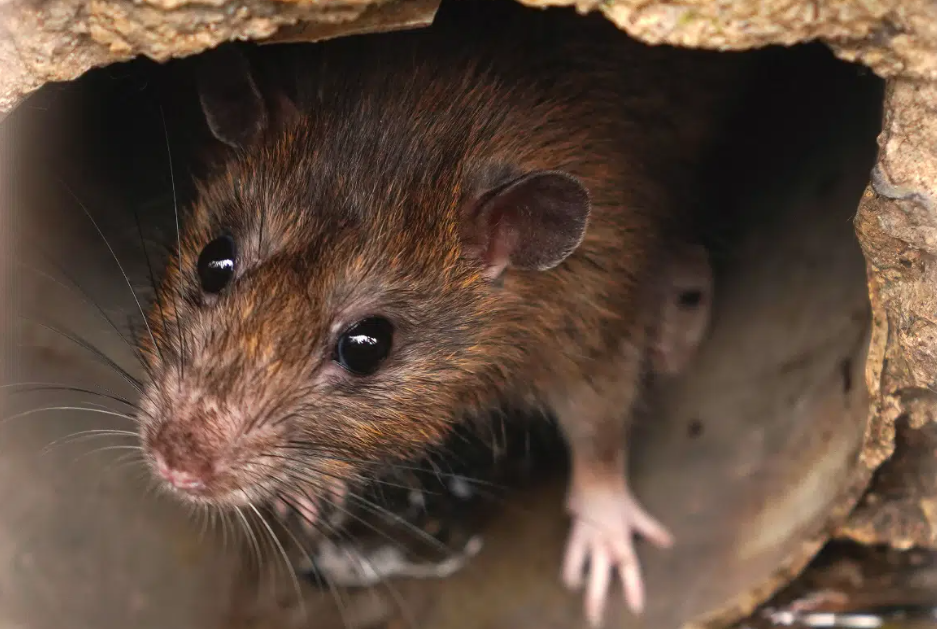Understanding the Threat: Why Do Rats Infest Drains

Introduction:
Rat infestations pose a considerable threat to both homeowners and businesses, with drains serving as an often underestimated entry point for these rodents. Rats, known for their adaptability, exploit drains for various reasons. The dark and damp environment of drains provides an ideal nesting site, while leftover debris becomes an enticing food source. Rats’ remarkable climbing ability allows them to effortlessly navigate through pipes and drains, creating challenges for property owners. To counter this issue, innovative solutions like rat blockers have emerged. These devices act as physical barriers within drainpipes, permitting water flow while preventing rat entry. Proactive measures, such as installing and maintaining rat blockers, are essential for safeguarding properties and mitigating the risks associated with drain-based rat infestations.
Why Do Rats Infest Drains?
1. Access to Food Sources:
Rats, exhibiting their inherent opportunistic feeding behavior, are naturally drawn to drains due to their propensity to serve as accessible gateways to abundant food sources. The accumulation of residual debris and organic matter within these drain systems creates an irresistibly tempting and ample food source for rats, significantly enhancing their attraction to these specific areas. This abundance of sustenance not only entices rats but also contributes to the creation of an environment that is highly conducive to their survival and rapid proliferation. As these rodents capitalize on the available resources within drains, the interconnected challenges posed by their attraction to such locations become more apparent, underscoring the importance of implementing effective preventive measures to curtail their presence and mitigate potential infestations.
2. Shelter and Nesting Sites:
The confines of drains provide rats with a secluded and protected space, ideal for constructing nests. The dark and damp environment within drains proves to be an optimum breeding ground, facilitating the rapid reproduction and multiplication of these rodents. Drains, therefore, inadvertently offer rats a haven for shelter and procreation, intensifying the challenges they pose for property owners.
3. Navigational Routes:
Rats’ exceptional climbing abilities empower them to effortlessly traverse pipes and drains. These pathways not only serve as means to access new areas but also act as escape routes from predators or unfavorable conditions. The adaptability of rats in utilizing drains as navigational routes enhances their capacity to explore and exploit various spaces, exacerbating the difficulty of controlling their presence within drainage systems.
Certainly, rats exhibit remarkable climbing capabilities, showcasing agility and adaptability in navigating diverse surfaces. With robust claws and flexible bodies, these rodents effortlessly scale pipes, walls, and even vertical spaces. This exceptional climbing proficiency is a testament to their resourcefulness, enabling them to access elevated areas and explore various environments.
This adept climbing extends to drain pipes, presenting a particular challenge for property owners. Rats can exploit their climbing prowess to enter buildings through drain systems. The interconnected network of pipes provides an intricate pathway for these rodents, facilitating their movement through different sections of a structure.
Understanding the extent of rats’ climbing abilities is crucial for devising effective prevention strategies. Implementing measures such as rat blockers in drainpipes can act as a deterrent, disrupting their entry points and safeguarding properties from potential infestations. By acknowledging and addressing the climbing prowess of rats, individuals can adopt proactive approaches to mitigate the risks associated with these rodents infiltrating their living or working spaces.
Rat Blockers: A Solution to Prevent Infestations
1.Understanding Rat Blockers:
Rat blockers play a pivotal role as essential devices crafted to thwart rodents from infiltrating drains and sewer systems. These blockers, meticulously designed from durable materials resistant to rat chewing, go beyond merely hindering access—they establish a robust physical barrier. By proactively addressing this vulnerability in properties, rat blockers significantly minimize the potential for rat infestations. The durability of the materials used ensures a long-lasting solution, creating a reliable defense against the persistent efforts of rats to access these spaces. This strategic and preventive approach not only protects against immediate threats but also contributes to the sustained hygiene and integrity of the property. As property owners invest in the installation of rat blockers, they reinforce their commitment to maintaining a secure and pest-free environment, safeguarding against the adverse consequences of rat infestations in drains and sewer systems.
2. How Rat Blockers Work:
Installed within drain pipes, rat blockers serve a dual purpose: facilitating the unimpeded flow of water while concurrently obstructing the passage of rats. This multifaceted functionality proves highly effective in preventing rats from gaining unauthorized access to properties through drains. By strategically placing these blockers at key points within the drainage system, property owners can substantially reduce the likelihood of rat-related issues. This proactive approach not only mitigates the risk of infestations but also fosters a hygienic and secure environment. The seamless integration of rat blockers ensures that water drainage remains unhampered, preserving the functionality of the system while creating a formidable barrier against unwanted rodent intrusion. As property owners prioritize the strategic placement of these blockers, they actively contribute to the ongoing maintenance of a clean, secure, and pest-free living or working space.
3. Installing Rat Blockers:
When it comes to installing rat blockers, professional expertise is paramount to ensuring precise placement and optimal functionality. These specialized devices are available in diverse sizes, carefully tailored to fit various drainpipe dimensions, thereby accommodating the unique requirements of different properties. This tailored approach enhances their effectiveness in creating an impenetrable barrier against rat intrusion.
Furthermore, regular maintenance checks are crucial to guarantee the continued efficacy of rat blockers over time. Property owners are encouraged to invest in these preventive measures not only for immediate protection but also for the long-term fortification of their drain systems. By prioritizing the installation of rat blockers and adhering to routine maintenance, property owners actively contribute to upholding a rat-free living or working space. This proactive stance not only safeguards against potential infestations but also ensures the sustained cleanliness and functionality of drainage systems, providing peace of mind and a secure environment for occupants.
Conclusion:
Understanding the reasons behind rat infestations in drains is paramount for implementing comprehensive and effective prevention strategies. Rats, with their remarkable climbing abilities and keen sense of navigation, exploit drain systems as convenient entry points into homes and businesses. The interconnected network of pipes provides an intricate pathway for these rodents, making it imperative for property owners to address this vulnerability.
The adoption of proactive solutions, such as rat blockers, emerges as a pivotal step in safeguarding homes and businesses from the menace of rat infestations. Rat blockers, designed with durability and resistance to chewing in mind, act as formidable barriers within drainpipes. These devices not only prevent rat entry but also allow for the unimpeded flow of water, preserving the functionality of the drainage system.
However, the effectiveness of these preventive measures hinges on regular maintenance and ongoing vigilance. Property owners must prioritize routine checks on the rat blockers to ensure their continued efficacy. Additionally, implementing proactive measures, such as securing potential entry points and maintaining cleanliness in and around the property, plays a crucial role in creating a clean and pest-free environment.
In conclusion, combating rat infestations in drains requires a holistic approach, combining understanding, preventive measures like rat blockers, and consistent maintenance efforts. By investing in these strategies, property owners can fortify their defenses, creating a resilient barrier against rat intrusions and ensuring the long-term cleanliness and security of their living or working spaces.





